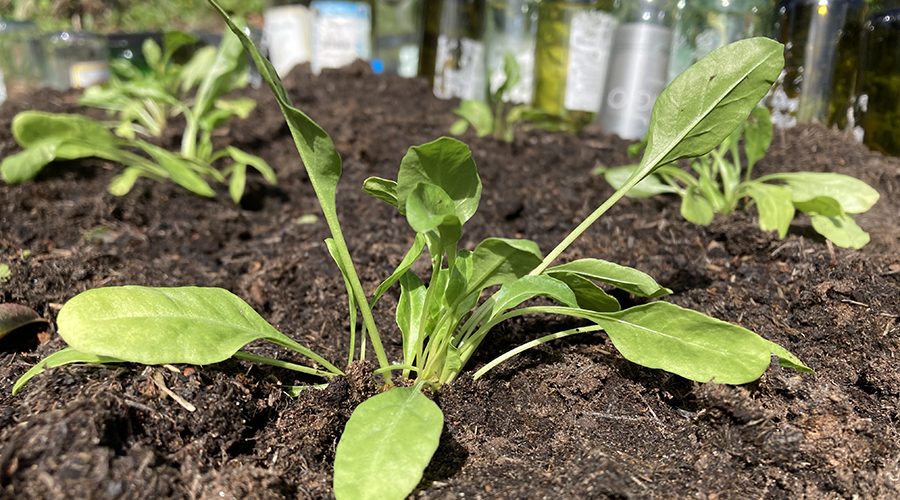Last week I wrote about grey mould, aka botrytis, on my cabbage plants, and in that article I explained that I hoped that using no-dig methods would help the soil (and plants) to recover so that it wouldn’t become a recurring problem every season. This sparked a few queries, so I thought I’d delve into no-dig growing for anyone interested, especially as autumn is such a good time to get going with it, whether you’re shutting down your plot for winter or planting up a few of Rocket Gardens’ autumn plants.
What is no-dig growing?
The basic idea of no-dig growing, is that you don’t dig over your plot each season. Instead, you mulch heavily and leave the soil underneath the mulch undisturbed. This allows all the worms and so on to work the soil for you. Essentially it mimics nature – the soil is not churned up all the time, but it is regularly covered by natural mulches – think autumn leaves falling in a woodland, and then slowly breaking down and gradually becoming part of the soil. With no-dig, you’re doing much the same thing.
The pros
- Soil is left undisturbed, and hence nature has a chance to do what it does best and can maintain better soil health.
- The mulch acts to replenish nutrients in the soil below, and does a good job of protecting the soil itself from exposure to harsh weather at both extremes of hot drought and heavy snow. It also helps to maintain the soil temperature.
- You will find you have fewer weeds to contend with, so there will be much more time for doing more enjoyable things in the garden, whether that’s having a cup of tea in the sunshine, or simply talking to the plants.
- You won’t be tasked with back-breaking digging every year, and the garden becomes easier to maintain.
- Healthier soil and healthier plants essentially means fewer pests and diseases, which again frees up a bit of time and will give you a better crop.
The cons
- You need a fair bit of compost, especially in the first year. If you don’t have access to homemade compost, this can be quite costly, although I’d argue that it is worth the investment!
- Other allotmenteers may become judgmental and scathing of your new no-dig approach… I’ve certainly experienced some scepticism. However, I have the last laugh, because they’re busy digging and whinging about clay soil, and I’m happily swinging in my hammock eating fresh strawberries.
How to get started
The way I started was, following advice from the guru of no-dig (Charles Dowding – have a look at his website, it’s great), to pull up the worst of the weeds, the brambles, nettles and bindweed roots, and then cover the raised beds with cardboard. Then I added a good 15-20cm layer of compost. I did this one spring, but if you can do this in autumn, then I think you’ll do really well when it comes to planting up in spring.
Now that my no-dig plot is fully underway, I simply top up with fresh compost at the start of spring and autumn. I just add a small covering now, perhaps only 2-3cm thick, because the beds don’t need a lot more than that.
Not convinced?
If you’re unsure whether or not no-dig growing is for you, then I’d really recommend trying it in just one small raised bed – I think you’ll be surprised at how straightforward it is and you’ll soon be hooked.

